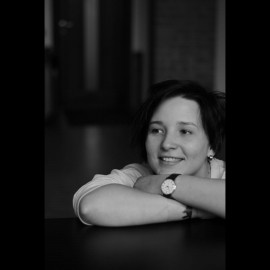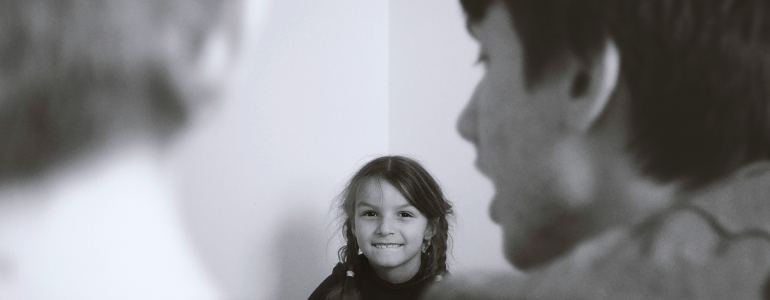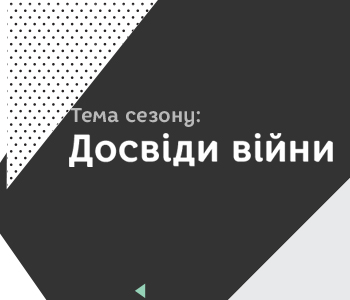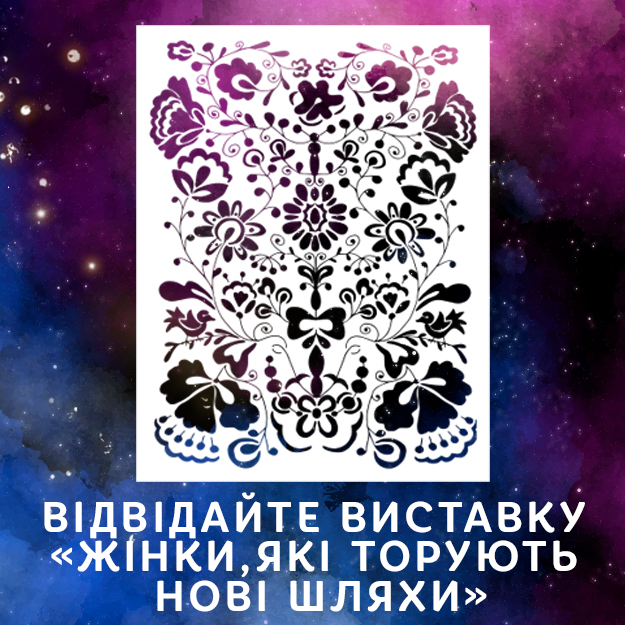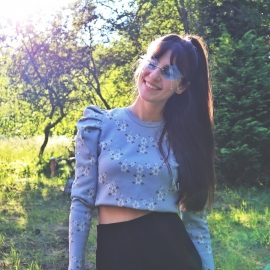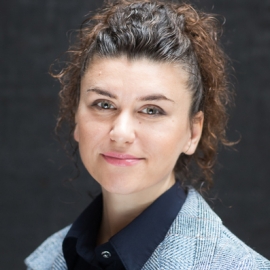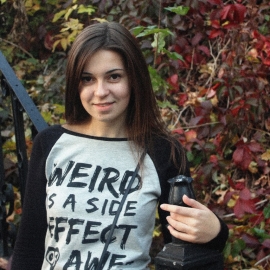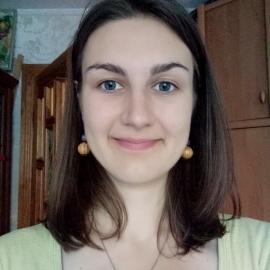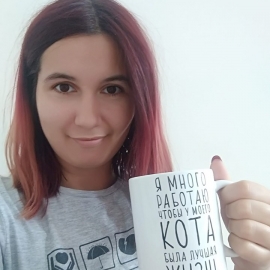Women at War: Problems Faced by Female Fighters of Armed Forces of Ukraine After the Full-Scale Invasion
Since 2014, the Armed Forces of Ukraine (AFU) have changed significantly. The impetus was provided by Russia’s annexation of the Crimean peninsula and its aggression in the East of Ukraine, which revealed that the Ukrainian army was not up to full-scale combat operations against the enemy’s regular army. Since then, the Armed Forces have been undergoing comprehensive reforms, year by year, be it weaponry, organization, uniforms, or ratios. However, in was only in 2016 that the Army saw the first reforms regarding the status of women in the military. Back then, a special Decree by the Ministry of Defence[1] expanded the list of military occupations available for women who received a military rank of a soldier, sergeant or first sergeant. In 2018, a new Law[2] “On amendments to certain laws of Ukraine concerning the provision of equal rights and opportunities for women and men throughout their service in the Ukrainian Armed Forces and other military formations” came into effect, intended to officially establish the equality of men and women in the army. The list of military occupations for women was expanded even more, and since then women could also be appointed as members of round-the-clock detail.

Female military personnel at the Independence Day parade in 2021
Prior to the full-scale invasion, the AFU numbered[3] 32,659 women in their ranks. Despite that, women’s visibility in the Army remained low.
In this article, we will discuss the evolution of the State’s policies regarding women in the Army over the 30 years of Ukraine’s Independence, the challenges that female military personnel faced after the full-scale invasion, as whether those issues are being solved.
Women and the Army Before 2014
Any analysis of the status of women in the army is impossible without a general understanding of what was going on with the AFU before 2014. Ukrainian army has changed a lot since the Soviet Union collapsed. In 1991, Ukraine had a significant military force inherited from the USSR. As of August 24, 1991, stationed on Ukraine’s territory were the following military units: three Combined and two Tank Armies, one Army Corps, four Air Forces, one Independent Air Defense Army, one Missile Army, the Black Sea Fleet, two units of the Missile Attack Warning System, 6.5 thousand tanks, 7 thousand armored vehicles, 1.5 thousand aircraft, 350 ships, 1272 ICBM nuclear warheads, 2.5 thousand units of tactical nuclear weapons and about 900 thousand in personnel.
On the dawn of Ukraine’s independence, the country had one of the world’s most powerful armies. But after the Soviet Union collapsed, the country’s leadership, pressured by the West, gave up the nuclear weapons, effectively making Ukraine a non-nuclear weapon state by 1996. Since the 2000’s, within the framework of several agreements with the EU and NATO, Ukraine has also implemented several programs of disposal and destruction of weaponry.
Between 2010 and 2013, no more than 1% of the State Budget was allocated to Defense, and the number of military personnel was constantly decreasing. In 2013, a soldier under contract earned UAH 1,700, with the average wages being UAH 2,700. Besides, corruption and nepotism, which were quite common in the Army, did not contribute to raising the prestige of the Armed Forces. During that period, level of the nation’s confidence in the Army fluctuated between 30–35%.
In October 2019, sociologist Hanna Hrytsenko in her research for “Gender in Detail” analyzed the status of women in the military in post-Soviet Ukraine. Ms. Hrytsenko’s research was based on data collected by a female expert Natalia Dubcjhak, who noted that after 1991, women did serve in the Ukrainian army, but usually those were wives, daughters and other relatives of servicemen. Nevertheless, the number of female military personnel increased year by year, among the officers in particular. If, for instance, there were only 0.7% female officers in 2001, that share increased to 2.25% by 2006. However, the expert immediately noted that it was due to the fact that men weren’t eager to take low-paying positions.
In her research, Hanna Hrytsenko noted that both the structure and the logic of the Army never changed since the Soviet era, so women were expected to perform serving and low-status roles. Independent Ukraine kept holding on to the Soviet-era stereotype about there being men’s and women’s occupations. Thus, to this day Ukraine never repealed the two articles of the Labor Code prohibiting women from working physically demanding jobs and night shifts, which led to the situation where women work those jobs anyways, but since they have no right for such occupations, they can’t be employed officially, and that often results in lower wages.
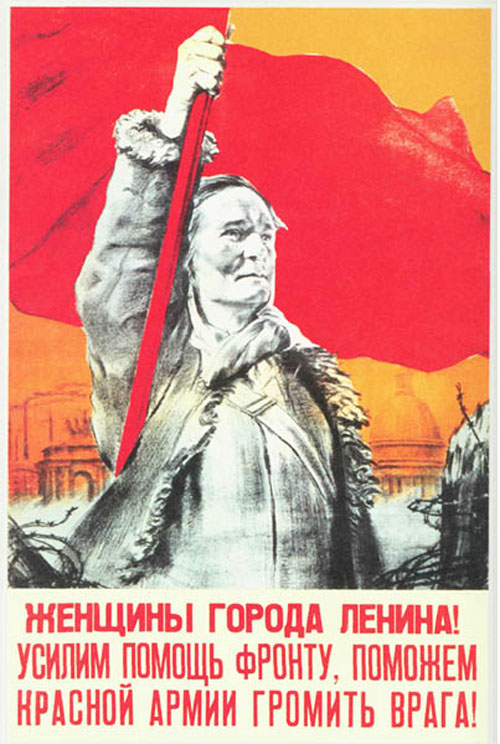
Soviet posters on women and war
During that period, women’s military occupations were offered to women as set up under the Decree by the Cabinet of Ministers of Ukraine “On the Approval of the List Of Specialties and Professions Which Provides For Military Registration Of Women As Liable For Military Service” dated October 14, 1994. It provided for the seven occupation categories: “Medical occupations”, “Communications”, “Computer Engineering”, “Optical and Sound-Ranging Measuring Tools and Metrology”, “Cartography, Topography, Photogrammetry and Aerial Photography”, “Polygraphy” and “Film and Radiomechanics”. That is, a woman could not apply for any combat positions in any way, and had to settle for cooking, sewing, and medical positions.
The patriarchy of Ukrainian society directly affected the Army. In 2013, "Ukrainska Pravda" periodical cited[4] the findings of a study carried out by Research & Branding Group nationwide. In this study, the respondents were asked to describe Ukrainian men and women. When speaking of men, the respondents came up with the following characteristics: courageous, strong, bread-winner, smart and intelligent. When it came to women, the respondents came up with the following: housewifely, physically attractive, keeper of the hearth. That is, people’s perception of women was strictly patriarchal. Since the Armed Forces is a rather closed and bureaucratic structure (which was especially true before 2014), this attitude in the Army was as predominant as nowhere else.
2014 as a Turning Point
The year of 2014 was a key year for Ukraine, leading to radical change in almost every public and social sphere. The Ukrainian Army was largely unprepared to face the annexation of Crimea and the Russian Federation’s involvement in the war in the East of Ukraine. Those circumstances contributed to the emergence of both volunteer battalions and volunteer organizations, with women playing significant roles in both. According to Ms. Hanna Maliar, the Deputy Minister of Defence, in 2014, her Department registered[5] the first rapid increase in numbers of women in the military. The second one occurred in 2022, after Russia’s full-scale invasion of Ukraine. That is, women also reacted strongly against the threats to their state and the military invasion, despite the existing patriarchal image of a warrior as an exclusively men’s role.
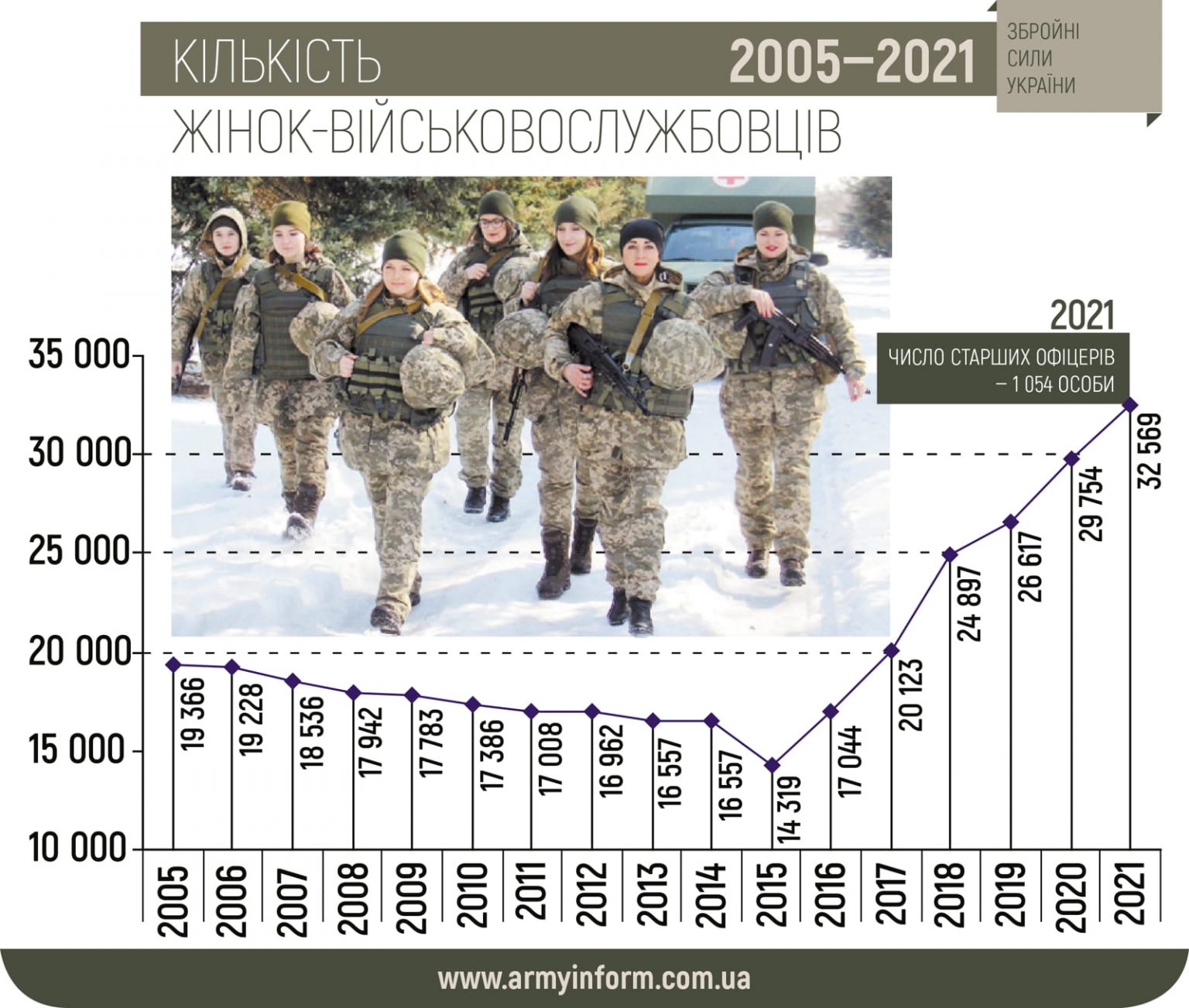
Women joined the volunteer battalions, did a lot of volunteering, and joined ranks of the Armed Forces. Alina Shevchenko, a citizen of Kharkiv and a queer woman, joined the Army in 2015, served in a combat unit, and later became a contract soldier. Today, she works as a military staff, with registration of conscripts being her responsibility. “To me, it wasn’t much a conscious choice back then, but over time I did come to understand what the Russian-Ukrainian war was. That’s how I realized I belonged in the Army,” she says.
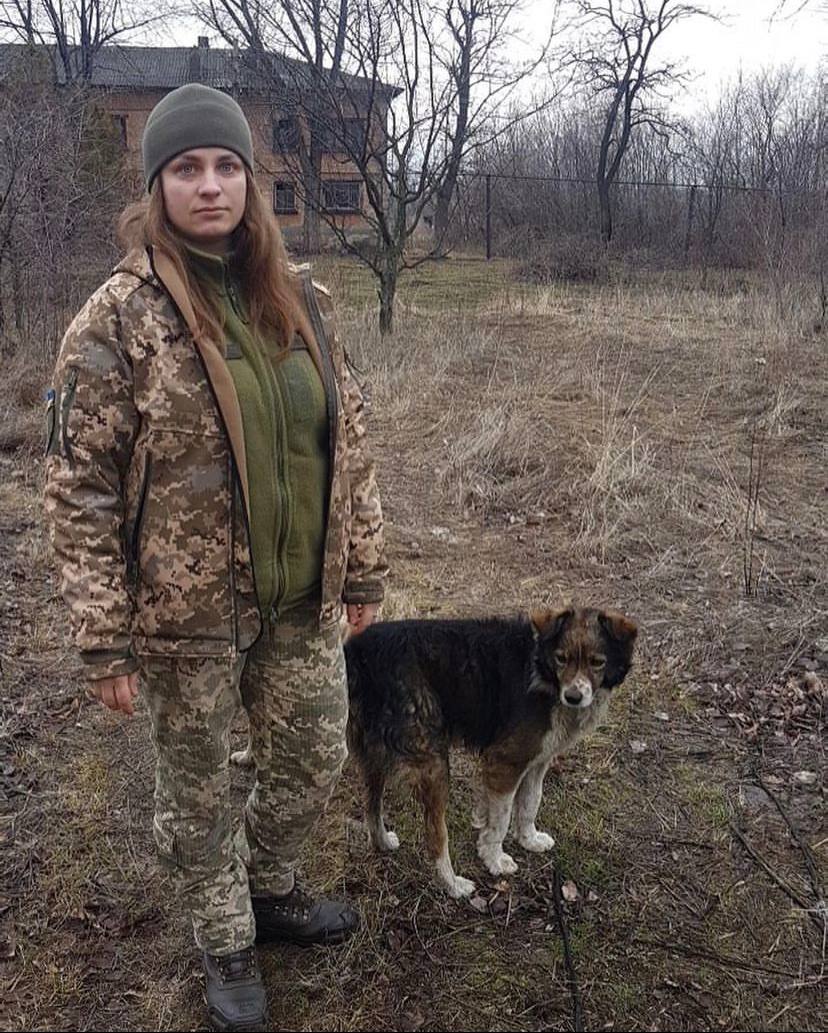
Alina Shevchenko, a female AFU fighter
In 2014, Ms. Yana Zinkevych, a volunteer, founded the Hospitallers Medical Battalion, best known for its participation in the fiercest battles of 2014–2016. During the entire time of its operation prior to the full-scale invasion, the Hospitallers saved the lives of 2,750 soldiers and Ms. Zinkevych was awarded with the Ukrainian 3rd class Order of Merit.
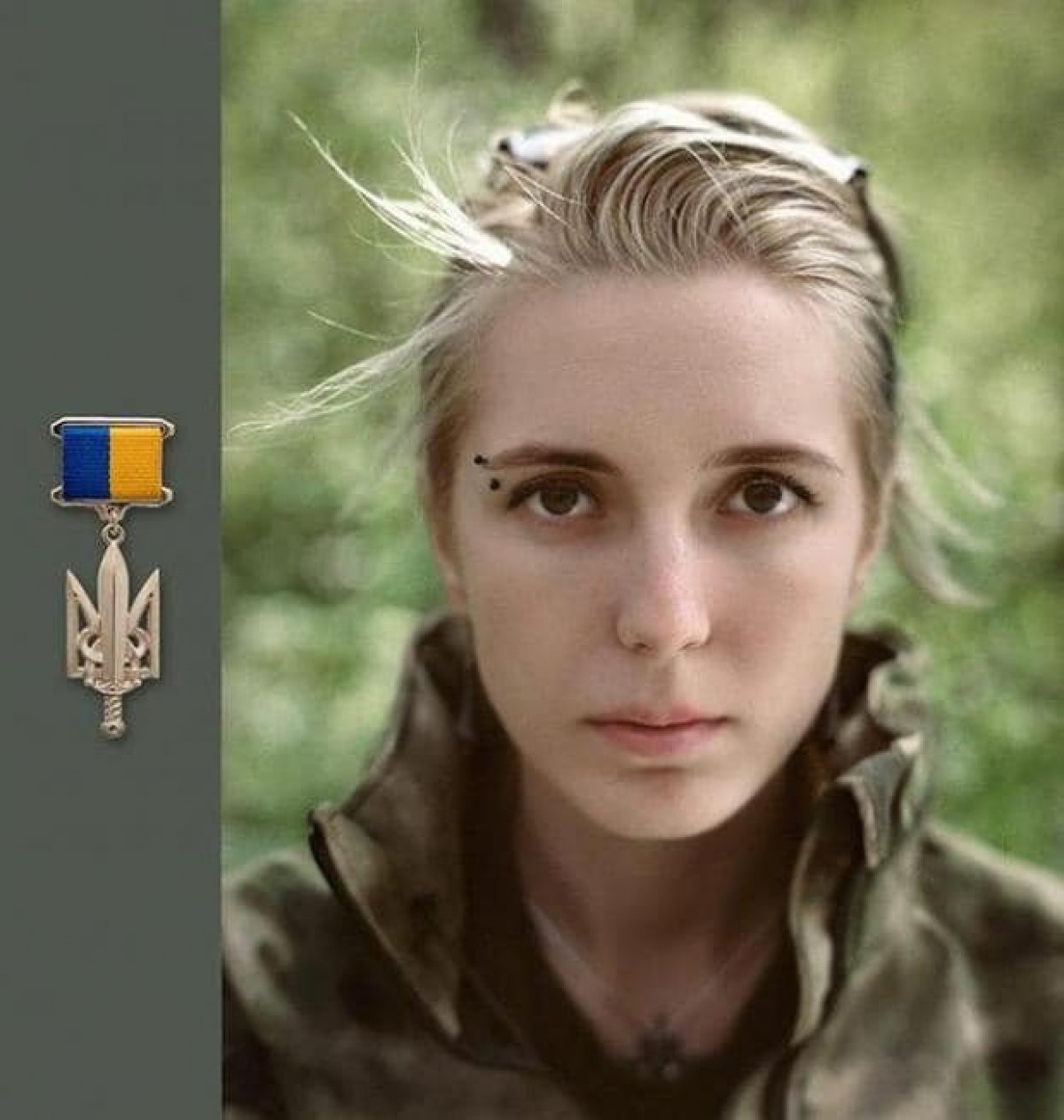
Yana Zinkevych
Nevertheless, women still had to face issues involving the military service. In 2015, in order to deal with the challenges faced by women, the Invisible Battalion movement emerged, with Ms. Maria Berlinska, an aerial reconnaissance officer, among its founders. It was them who initiated the repeal of the legislation that did not allow women to hold combat positions. One of the main problems brought up by these women was the glass ceiling that was still haunting the military service. That is, despite the legal restrictions for females holding certain combat positions were removed, there were obstacles that persisted in reality.
“We expected the situation to level, for many women were finally able to officially get the jobs they were already performing de-facto (despite being listed as some administrative staff back then),” says Ms. Olena Shevchenko, Head of the Insight Organization. “However, we still have a lot of cases where there are obstacles. That usually depends on specific commanders of specific battalions. Some commanders still do not have a clue that women can now officially hold certain positions. That is, the legislation was updated, but many people in the field are simply unaware of that.”
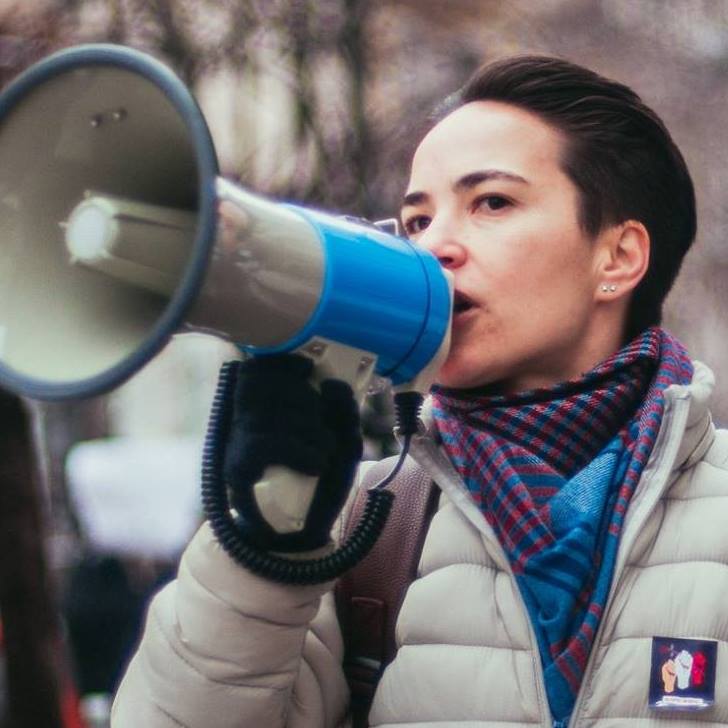
Olena Shevchenko, JurFem
This statement is further supported by Ms.Hrystyna Kit, the Head of the NGO Ukrainian Women Lawyers Association “JurFem”. According to her, even after the full-scale invasion, their NGO still receives complaints from women who were denied officer ranks and promotions.
Back in January 2019, Ms. Ivanna Klympush-Tsintsadze, then Vice-Prime Minister for European and Euro-Atlantic Integration, said that the number of female personnel in the AFU graded up to NATO armies: “As of today, 10.6% of our military personnel are women, which is approaching the average 10.9% for the NATO armies.” However, it would be wrong to measure exclusively by quantitative indicators. NATO promotes the capacity building for the role of women in the structural organization, and women in the Alliance countries can hold responsible positions as Heads of the General staff and Ministers of Defence.
As of today, there have been only three female generals in Ukraine’s history. In 2018, Ms. Liudmyla Shuhalei , head of SBU’s Military Medical Department, became the first Ukrainian woman to be promoted to Brigadier (one-star) General of the Medical Service. In 2020, President Volodymyr Zelensky awarded the rank of Brigadier (one-star) General to Ms. Yulia Laputina of SBU, and in 2021, the AFU also got their first female Brigadier (one-star) General, Ms. Tetiana Ostashchenko.
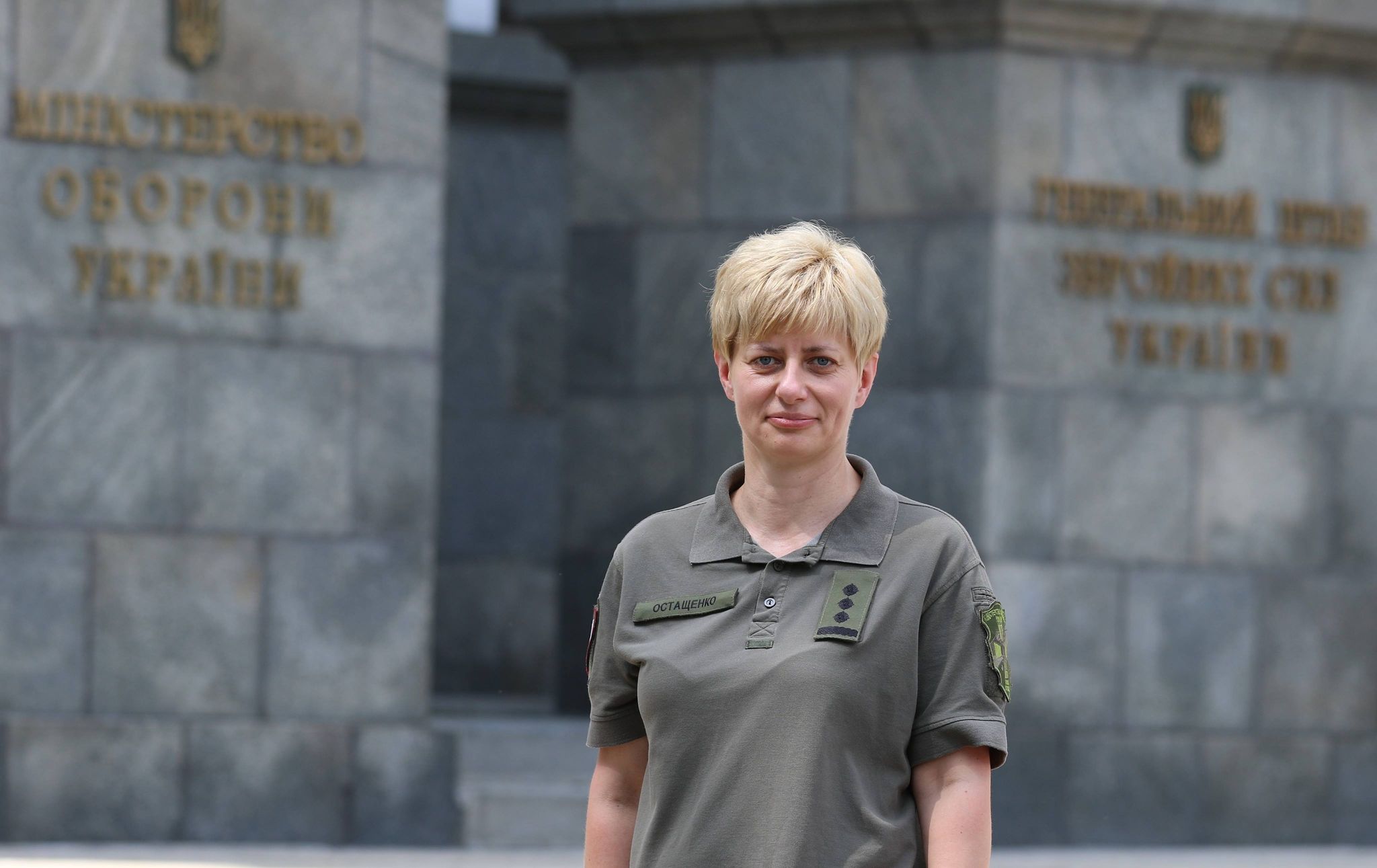
Tetiana Ostashchenko, Ukraine’s third female general
Full-Fledged War of 2022: Are the Women Defending the Country Visible?
In October 2021, a study[6] held by the Institute of Mass Information revealed that the media references to female military personnel are scarse. While servicemen where mentioned in almost every piece about Army and war, women only get 5% of the references. As of today, the number of pieces of women fighting on the frontline alongside men has increased significantly[7].
The media emphasize the importance and visibility of women in the Armed Forces. The important thisng is that, as a rule, those pieces are free of grassroots sexism like "war is no place for a woman." By comparison, back in 2019, fakty.com.ua published a piece titled “War’s Female Face: Fairer Sex in the Israeli Army”. A quick monitoring of pieces published after February 24, 2022, shows that phrases like “fearer sex” and “the weaker sex” are no longer used.
This was greatly facilitated by symbolic changes in the symbolic sphere. In 2021, the name of the [Male] Defender of Ukraine Day, Ukraine’s national holiday celebrated on October 14, was changed to [Male and Female] Defenders of Ukraine Day [in Ukrainian, “male defender” and “female defender” are separate words, — translator’s note]. Today, President Volodymyr Zelensky addresses his daily evening speeches to defenders and volunteers at the frontline, both guys and girls. This tradition was picked up by mass media and other officials. The use of feminine gender-specific forms of nouns has become a common courtesy.
In theit posts on March 8, 2022, the law enforcement agencies abandoned their previous tradition of promising to protect women, and chose to celebrate the women serving in those agencies instead.
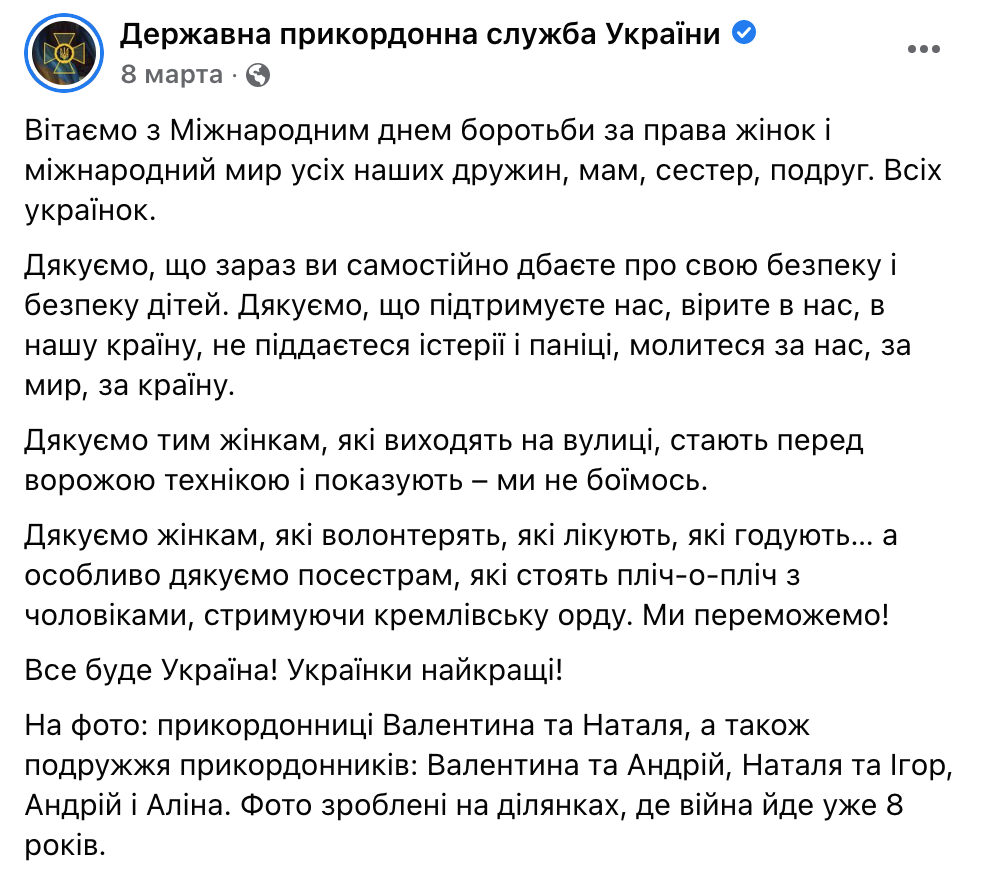
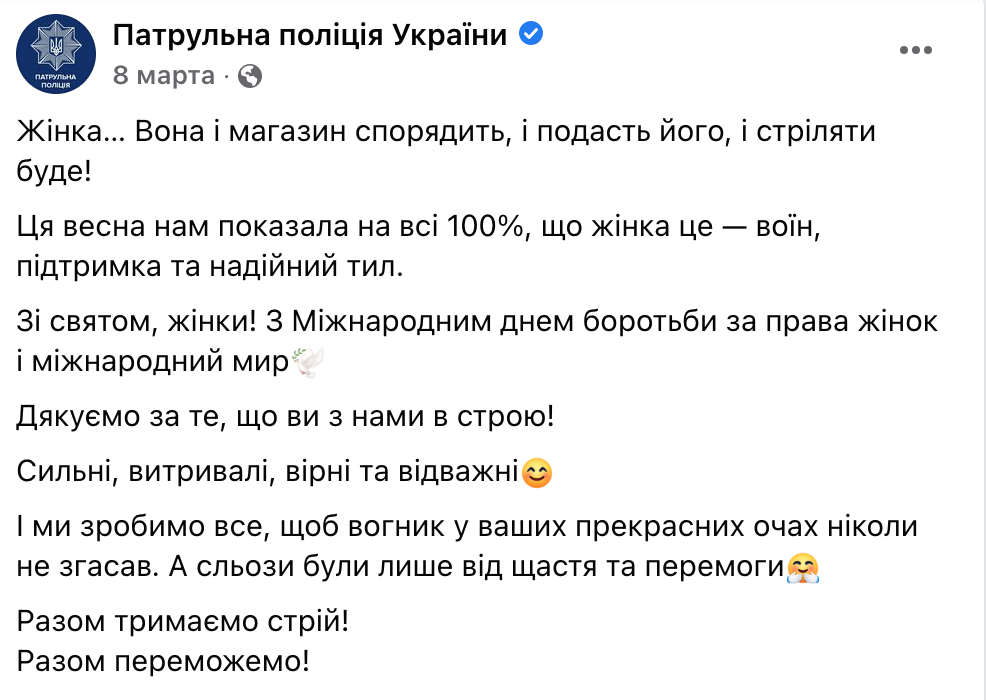
Like in 2014, Ukrainian women participate in every aspect of action on the frontline. They live with the military units as volunteers, serve as military paramedics and medics, infatrywomen, snipers, and machine gunners. Many of them are famous bloggers, so they use their platforms to help the Army as well. Ms. Anastasia Shevchenko, a singer and a TV-host (who goes by the moniker “Stasik”), rejoined the ranks of the AFU after February 24 (She had been a paramedic and first-aid instructor in 2014). Stasik uses her media platform raising funds for the military units, and her 2019 song called “A lullaby for the Enemy”, with a line “You wanted this soil so badly, so be it, dust to dust, now blend with it”, became the hymn to fighting the enemy of sorts.
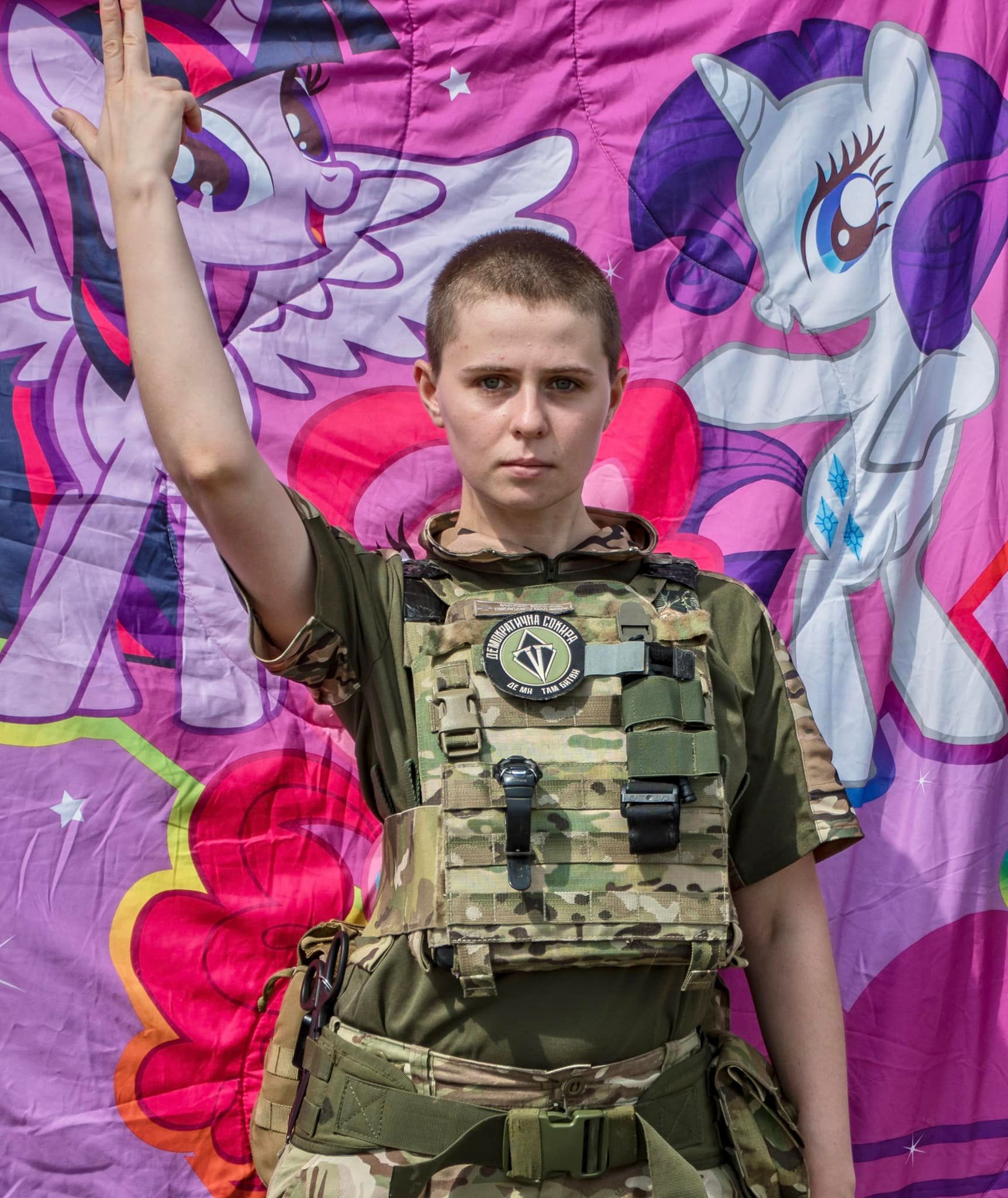
Anastasia Shevchenko
Ms. Maria Nazarova, a tactical medicine instructor, co-wrote the Tactical Medicine Training Course for the General Staff of the AFU. In the past eight years, she trained over 8,000 military personnel. Today Ms. Nazarova provides training for the military and civilians alike, and is actively engaged in myth-debunking information campaigns on tactical medicine.
Ms.Maria Nazarova explaining the difference between Russian and Ukrainian First Aid Kits
It’s been two years since Ms. Yaryna Chornohuz joined the AFU as a combat medic. On her social media, Yaryna shares a lot of her service experiences, her everyday live on the frontline, her thoughts on status of women, greatly adding to normalizing the visibility of women in war.
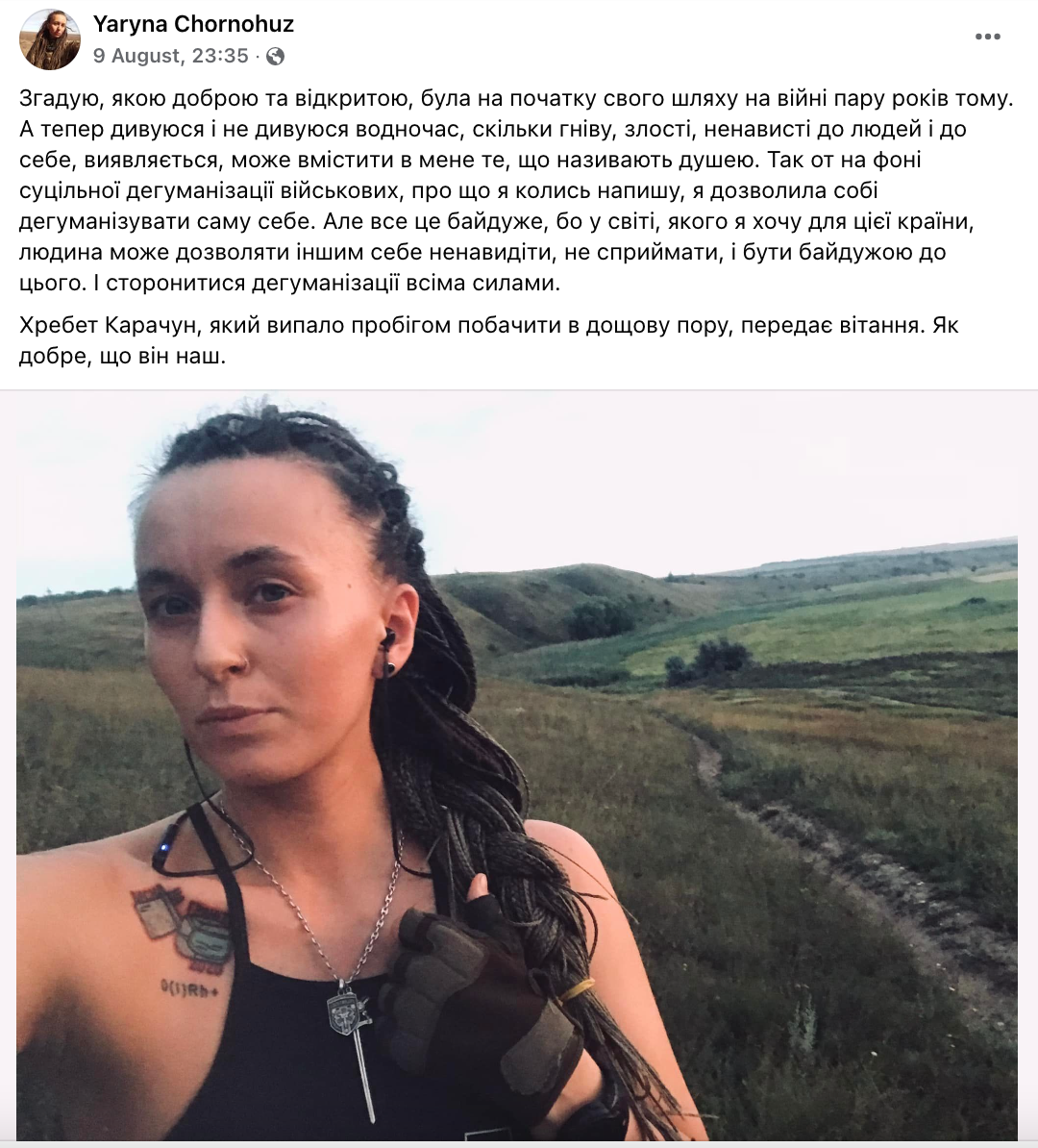
Many women joined the Army fort the first time, spurred on the desire for defending their country. Like, for instance, Ms. Lesia Hanzha, the former editor of a feminist periodical “Zhinky — tse 50% Uspikhy Ukrayiny” (Ukr. “Women Make 50% of Ukraine’s Success”). On February 24, she joined the Kyiv Obolon District Territorial Defence, and later patrolled infrastructure facilities in Irpin near Kyiv.
She shared[8]: “ A lot of men, in my battalion in particular, have the same question, ‘What are doing here? Why are you here?’. Some of them don’t, which is a huge progress. And when I ask them back, ‘And why are you here?’, they immediately reply, ‘To defend Ukraine, of course’. And I’m Like, ‘Well, I’m also here to defend Ukraine, I’m a citizen just like you are.’ And many of them give it some thought and then they agree.”
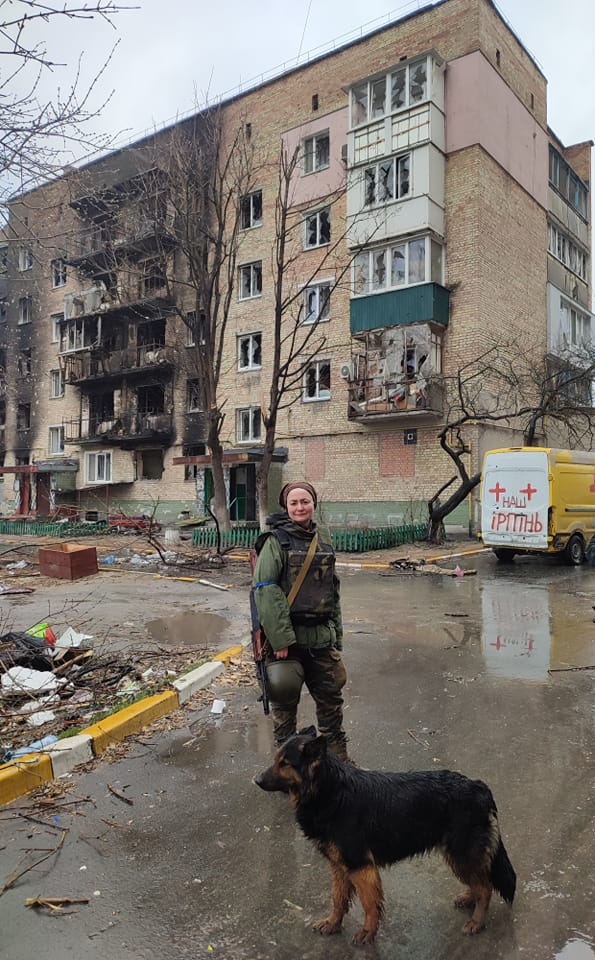
Lesia Hanzha in Irpin, March 2022
Women in Captivity (Female Prisoners of War)
In every military conflict, women are one of the most vulnerable groups. According to the UN, it is women who make 54% of persons who need assistance due to war. This applies to both civilians and military servicewomen, and first and foremost, we are talking about captivity.
In 2009, the NV published an article[9] on women who had been held captive by the terrorist organizations of “DPR” and “LPR”. According to them, sexual abuse against women in captivity was a common thing. According to Ms. Kateryna Levchenko, government commissioner for gender policy, similar sex crimes were also perpetrated at roadblocks and other demarcation line crossing points. Besides, some witnesses claimed that the guerrillas had brothels where they took captured women and forced them into prostitution.
Sexual violence is yet another weapon of war, an element of psychological pressure and intimidation. It is both a criminal offence and a violation of International Law. Since Russia launched the full-scale invasion, human rights activists and government institutions alike are tirelessly recording information on sexual crimes against Ukrainian women — both civilian women and women in captivity. In April, Ms. Iryna Vereshchuk, the Vice-Prime Minister and Minister for Reintegration of the Temporarily Occupied Territories of Ukraine, said that she was informed about women being raped in captivity.
In mid-March, the Russians captured Ms. Yulia “Tayra” Paievska, who spent more than three months in captivity. She later shared[10]: “In the final part [of my captivity], they held me at Donetsk SIZO [pre-trial detention facilities, — translator’s note], where a lot of our prisoners of war still remain. The attitude was terrible. They feed you more or less, so you are unlikely to starve to death. However, during my last week there, they didn’t even give us soap. There were 22 women in the cell, a room 3 by 6 meters, with only 10 beds.”
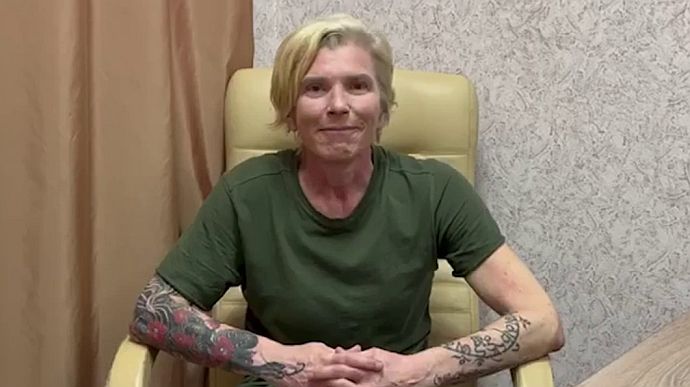
Yulia Paievska in the first days after being released from captivity.
Russian propaganda weaved a powerful mith around Tayra, portraying her as a Nazi and a murderer who mercilessly killed children and women. While creating that myth, they specifically emphasized the fact of Yulia being a woman. Using the patriarchal stereotype that a woman should be a gentle, soft creature, the propaganda thus reinforced the effect of their lies.
In April, Ukraine returned 15 female servicemen from captivity. All of them had their heads shave — another form of humiliating women. The occupiers also use psychological pressure on women, blackmailing them with their relatives and children. Here's what Tayra shared: “The other [women] also had no information about their families and children. They were Ukrainian women from the ranks of the Armed Forces and the National Guard, there were girls from Azov, and there were also civilians."

Women who were returned from captivity to Ukraine in April
After 15 Ukrainian women were freed from captivity, Iryna Vereshchuk announced the number Ukrainian servicewomen being held as prisoners of war at that time, which was about 500 persons. There is no telling how many women are being held captive today. Apparently, their number has increased significantly, especially after the last Azovstal defenders were captured in May. The fate of 82 captured female doctors from Mariupol is unknown. Those were doctors, nurses and employees of the military hospital in Mariupol, who have been in captivity since April 12.
As of today, there is lack of media coverage when it comes to Ukrainian women in captivity, and there is a lack of international attention to that issue as well. International feminist organizations should help Ukraine with that issue and raise awareness about those female prisoners of war. Keeping the spotlight on those women in captivity is the only thing that might keep them alive.
Women’s Uniforms and Personal Hygiene: What Is Lacking in the Army
According to Deputy Minister of Defense Hanna Maliar, about 50,000 women serve in the ranks of the AFU today, of which about 5,000 are currently on the frontlines, and 12,000 are civilians who joined the Army working administrative jobs. Since February 24, the number of servicewomen increased by 7,000 persons. One of the problems they faced was the lack of women’s uniforms. In Ukraine, there is a single approved standard for military uniform, which is men’s uniform. As of today, only the dress uniform come in women's sizes. For that reason, the servicewomen are forced to adjust their uniforms by utilizing yarns and needles, pins, and tactical belts (when in the field).
“What fits you in the hips might not accommodate your breasts, what fits you in the waist is too narrow in the hips,” explained[11] Ms. Iryna Nikorak, a Deputy of Kyiv City Counsil. “90% of servicewomen are forced to employ assistance of a seamstress, if a military unit has one, or do the adjustments at their own expense. And while in the field, the opportunity to hem their uniforms doesn’t always present itself.
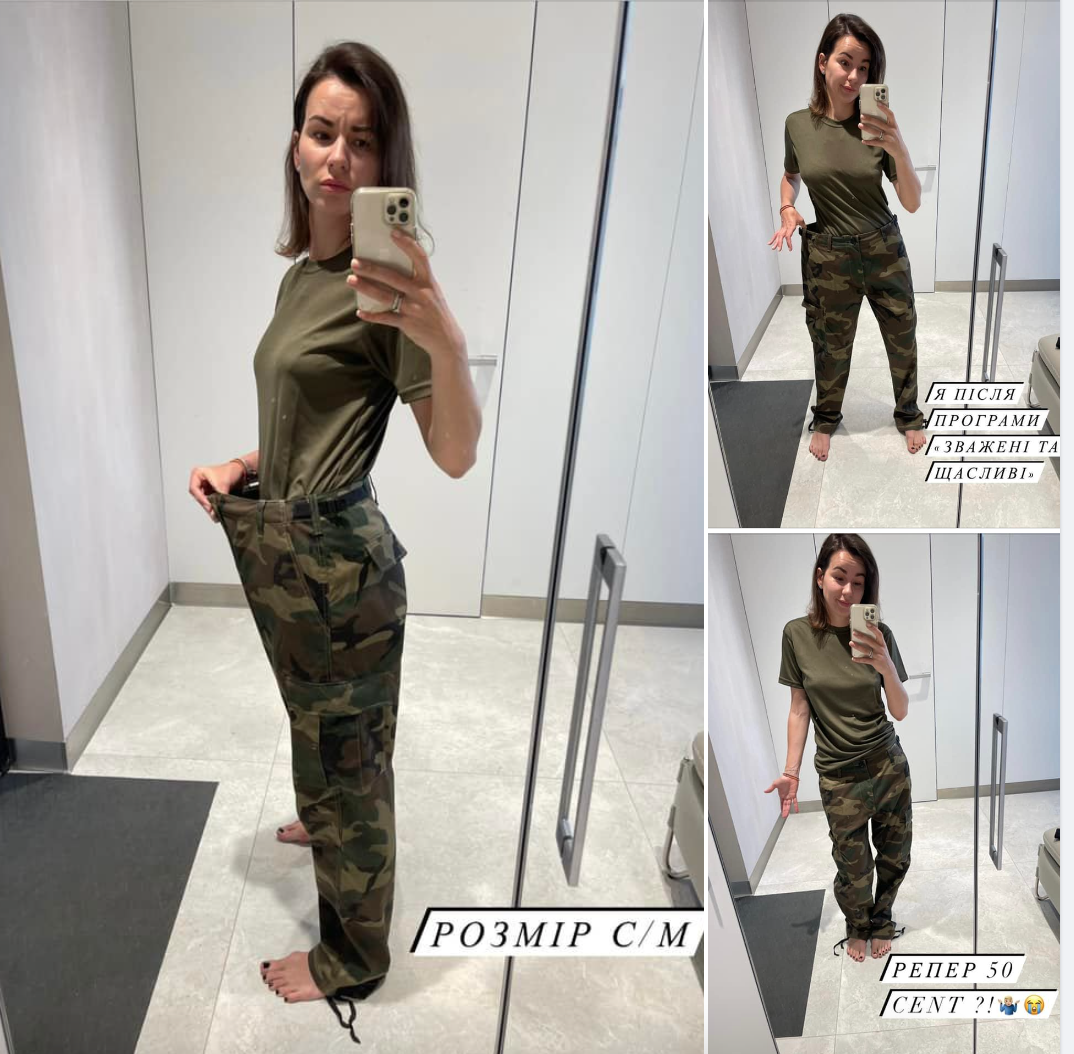
Iryna Nikorak explaining why men’s uniforms are not fit for women
“The problem is a complex one, and what it actually reveals it that women are never taken into consideration, be it undergarments, body armors or helmets,” complains Olena Shevchenko. “A body armor that is not the rights size is overall harmful, because it kills your back and causes bruises and swelling”.
It may seem strange that the issue of military uniforms being the source of discomfort was never raised until this day. If the men's uniform, in particular the field uniform, has been undergoing constant improvements since 2015, the only improvement the women’s uniforms have ever gotten were those adjustments to women’s dress uniforms in 2019 made to bring them to compliance with the new standards for the AFU dress uniforms. This may also indirectly indicate that women in the Armed Forces were not considered as full-fledged combat units, for whom having a comfortable uniform is the key to successful service.
At the same time, armies of some of the NATO member-states and other countries do have women’s uniforms. In Israel, where both men and women are being drafted, the issue with women’s uniforms had been a tricky one for decades. According to Israeli military officer Yigal Levin, because women could not claim combat positions, they wore caps instead of berets, skirts instead of pants, and shoes instead of boots. In the 1970s and 1980s, feminist movements forced a review of the policy on women's uniforms, and ever since then women also got their regular military uniforms (although they can opt for a skirt and shoes should they be that way inclined). Despite the fact that slightly different patterns are used to produce women’s uniforms for the Israeli army, Yigal Levin say that Israeli servicewomen still resort to adjusting their uniforms to make them more form-fitting (despite that being officially prohibited).
When it comes to women’s uniform’s, it’s the US Army that has one of the best approaches in the world. In 2009, the US Army initiated the development of special combat equipment for women. Currently, the US military has a database that contains 93 parameters and 3D scans of the male and female bodies. With their help, perfect comfort in achievable not only in uniforms, but also in body armor, backpacks, and even car seats. In 2018, the US Army also approved a new body armor system, namely the Modular Scalable Vest (MSV). It weighs less, does not interfere with movements and is adjustable to bodies of every size and shape.
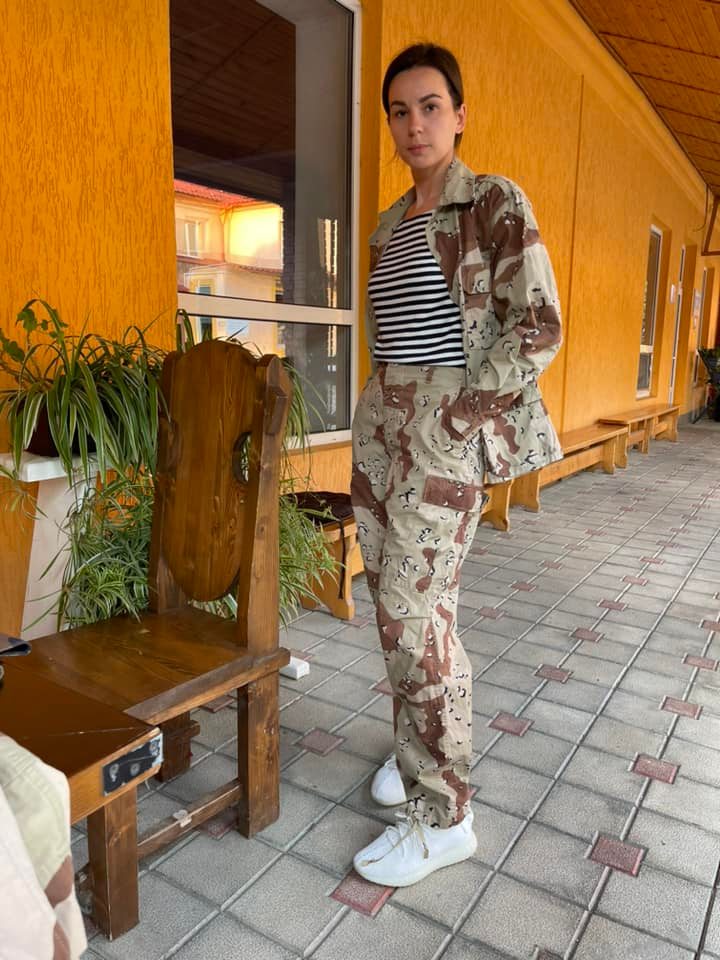
Iryna Nikorak wearing a US Army women’s uniform
As of today, volunteers are working on uniforms for women in the Armed Forces of Ukraine. One of the major projects — ArmWomenNow — was founded by Iryna Nikorak. It was the uniform samples in the US army that were taken as a reference. However, this is a purely volunteer project, and its implementation solely depends on donations via crowdfunding. In July of this year, Ukraine’s Ministry of Defense told the Ukrainian BBC that it was working with two initiative groups, with the first one being a group of volunteers supported by the President's Office as part of the First Lady's project "Barrier-free", and the second one being Iryna Nikorak’s project. The agency informed that they held a meeting with both groups and offered to test experimental prototypes in the field.
“There is still no centralized manufacturing line for women’s uniforms,” says Olena Shevchenko. “We have a company that makes uniforms for the Ministry of Defense, but those uniforms are exclusively for men. We have to make amendments in that process at the leadership level, have a tender, and start sewing women’s uniforms already, with separate patterns being used for men and women. Our main task is to speed up that process.”
Apart from the uniforms, women in military face specific challenges when in the field that men do not. First of all, we are speaking about the lack of access to menstrual products and having to endure menstrual pain. But so far, this issue has never been raised at the legislative level, so women are also forced to provide for themselves with every necessity.
Sexual Harassment in the Army
In 2018, Lieutenant Valeriia Sikal reported being harassed by the commander of military unit A-1358 Viktor Ivanov. Hers was the first public statement about harassment in the Armed Forces of Ukraine. But the criminal case, based on Valeria's application, never made it to court, Viktor Ivanov was never dismissed from the military service. The first case to have some real consequences, namely dismissal of the alleged perpetrator, took place in January 2021. Olga Derkach, the lieutenant colonel of the Armed Forces of Ukraine, reported sexual harassment in the workplace by her supervisor, regional military commissar Oleksandr Krivoruchka. Mr. Kryvoruchka was released from duty.
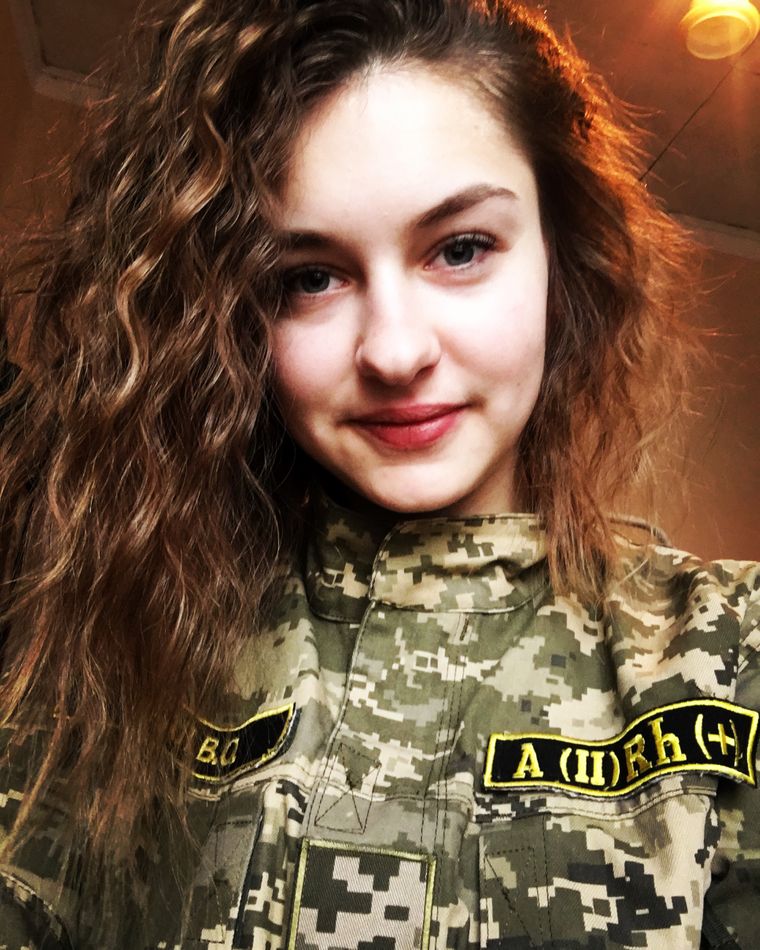
Valeriia Sikal
Sexual harassment in the Army remains one of the taboo topics. In September 2020, the Kyiv International Institute of Sociology in cooperation with the “Invisible Battalion” conducted a survey on how people feel about harassment in the Armed Forces. About 20% answered that that issue was important, yet often overlooked. 56% of respondents said that that issue should be brought to the public sphere, and 7% of respondents believed that public discussion would be have a damaging effect on the image of the AFU.
Olena Derkach claimed[12] that she was forced to endure many years of Kryvoruchko’s harassment (they served together since 2009), yet for a long time she did not dare to give this case a go. According to Olga Derkach, fear is one of the most common reasons for such silence: “There are a lot of factors at play. Women may be afraid of repercussions in the service. They may be ashamed and unwilling to tell their families. Aa ome acquaintance put it: you know how my husband is, if he finds out, I will be homeless tomorrow, and he will divorce me.”
According to Olena Shevchenko, the Head of the Insight, more often then not it is not the victims themselves, but their friends or acquaintances who file complaints about sexual harassment in their name. Over the entire time, the Insight received about 10 such requests. “As a rule, the commander puts moves on the girl and demands some kind of sexual favors from her, demands her to be accommodating to his wishes,” says Olena Shevchenko.
Ms. Hrystyna Kit, the Head of the NGO Ukrainian Women Lawyers Association “JurFem”, claims that they also received complaints from women about harassment from their commanders or other military personnel. “But,” she adds, “as a rule, those were not complaints from the places of ongoing active combat. Because you have no time for fooling around in the hot spots, unlike those who are in bases. In particular, we are talking about the western and central regions — that is, those that are far from active hostilities.”
Hrystyna Kid adds that even if a woman is willing to report harassment, it is often difficult to bring this case to court. “It so happens that there were no witnesses to the harassment, and apart from the victim’s claims, there is no one else who could confirm it,” she says. “That is, criminal prosecution is a rather complicated and traumatic procedure for the victim.”

Hrystyna Kit
Hrystyna Kit believes that it would be more effective if such crimes demanded internal investigations. As Viktoria Arnautova, advisor to the Commander-in-Chief of the Armed Forces of Ukraine on gender issues, told Radio Svoboda in March, the issue was under consideration. "We are studying the legislation, analyzing internal documents, trying to figure out how to better develop this tool, which would include methods of filing complaints and protecting the rights of process participants. It is necessary to ensure confidentiality and anonymity, as well as possibility for closed case hearings. This is a very stigmatized topic, not only for the armed forces, but for the society in general," she explained. As of today, there are no effective tools so far, and taking those issues to law enforcement agencies more often than not fails to provide the victim with some satisfaction and closure.
Conclusion
The Ukrainian Army cannot evolve apart from the Ukrainian society, on the contrary, the more changes occur in society, the faster and better they will be inplemented in the Armed Forces. During the eight years of reforms, the status of women in the Armed Forces has seen a dramatic change. With the numbers of servicewomen dramatically increased, their choices are finally not limited to stereotypically “women’s” occupations, the combat positions are now open to them as well. Nevertheless, women are still the most vulnerable persons in the military structure, where the overall patriarchal nature of Ukrainian society is superimposed on the closedness and bureaucracy of the Army.
Alina Shevchenko, a servicewoman of seven years,says that there is still a lot of prejudice towards women in the Army. “I’ve had multiple situations where I was treated in a condescending manner,” says the young woman. “I mean, bot a guy and a girl can be treated like that, but when you are not allowed to do something just because you are a woman, it really pisses you off. For some reason, those social constructs are still alive and well.”
Which, in particular, applies to sexuality. Alina has been open about being a lesbian, having a partner, and her dating history with other girls from day one. She says that her coming-out never caused any open condemnation or bullying, but adds that it is also related to prejudice against women. After all, there is a stereotype in society that two women loving each other is some form of “aesthetic”, while the same never applies to two men.
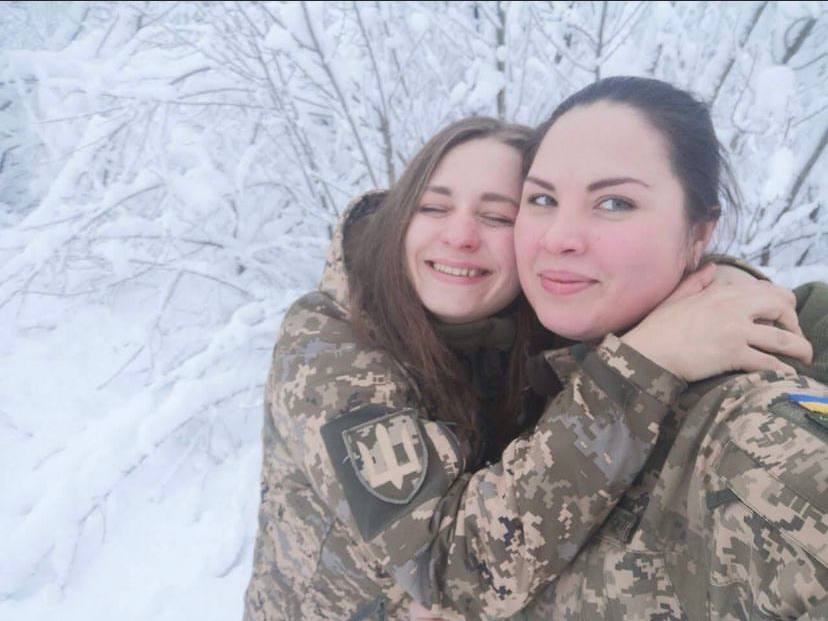
Alina Shevchenko with her sister-in-arms
“Our society is in dire need of sex education, for we do not have one on a general level,” muses Alina. “The same applies to other areas. After the Istanbul Convention was finally ratified and we had a discussion about it, I could see that people did not understand what it was for. They are guided by stereotypes. When you tell them how it really is, that person can gradually change their mind. I hope that this full-scale invasion helps us really turn the tide.”
This article was produced with the support of Unit.
[1] PROVISIONAL LIST of Military occupations for the personnel who received a military rank of a soldier, sergeant or first sergeant in the Armed Forces of Ukraine https://zakon.rada.gov.ua/laws/show/z0600-14#n14
[2] LAW OF UKRAINE “On amendments to certain laws of Ukraine concerning the provision of equal rights and opportunities for women and men throughout their service in the Ukrainian Armed Forces and other military formations” https://zakon.rada.gov.ua/laws/show/2523-19#Text
[3] How many servicewomen are there in the Armed Forces of Ukraine — updated data from the Personnel Center. ARMY INFORM, December 4, 2021. https://armyinform.com.ua/2021/12/04/skilky-zhinok-vijskovosluzhbovcziv-sluzhat-u-zbrojnyh-sylah-ukrayiny-novi-dani-kadrovogo-czentru/
[4] Acute shortage of real men recorded in Ukraine. Ukrainska Pravda, May 16, 2013.
https://life.pravda.com.ua/society/2013/05/16/128600/
[5] The second rapid increase after 2014: how many woman serve in the Armed Forces, and how many of them are on the front lines. Channel 24, June 24, 2020.
https://24tv.ua/drugiy-splesk-pislya-2014-skilki-zhinok-sluzhat-zsu-skilki-nih_n2103822
[6] Female military personnel get only 5% of media references — a study be IMI, October 10, 2021. https://imi.org.ua/monitorings/na-zgadky-pro-zhinok-vijskovosluzhbovyts-v-media-prypadaye-lyshe-5-doslidzhennya-imi-i41836
[7] Ms. Maria Prymach. A Warrior, a Volunteer, an Activist: Evolution of Women’s Image in the Media after Russia’s Full-Scale Invasion (a student research). Mediakrytyka, July 30, 2022. https://www.mediakrytyka.info/ohlyady-analityka/voyovnytsya-volonterka-aktyvistka-yak-zminyvsya-obraz-zhinky-v-ukrayinskykh-media-pislya-povnomasshtabnoho-rosiyskoho-vtorhnennya-studentske-doslidzhennya.html
[8] My child is 25, so We Went to Sign Up to the Military Commissariat Together — a Journalist Who Joined the Territorial Derfence, Hromadske Radio, April 13, 2022. https://hromadske.radio/podcasts/40-novi-20/moiy-dytyni-vzhe-25-tomu-my-razom-zibralysia-i-pishly-u-viys-kkomat-zhurnalistka-iaka-vstupyla-do-teroborony
[9] “They Described How My Daughter Would Die”. Stories of Women Who Survived Rape and Captivity by Iryna Lopatina, NV, May 19, 2021. https://nv.ua/ukr/ukraine/events/donbas-poloneni-zhinki-shcho-stali-zhertvami-nasilstva-reportazh-novini-ukrajini-50060988.html
[10] TAYRA: Captivity, Mariupol, Ukraine’s Future. Interview by Radio Svoboda [Ukr.Radio Freedom] https://www.youtube.com/watch?v=XVGBT6jkAks
[11] https://www.facebook.com/Nykorak.Iryna/posts/pfbid02nvjwTWA9CZEYMdSaAzEovZ6kHKL1bpAEC5V6LUCXdsz3xp5U9mpP1r5JxKztPMKyl
[12] Nadia Konstantinova. Relocation to another brigade “through the bed”, or why they keep silent about sexual harassment in the army. Radio Svoboda [Ukr. Radio Freedom], March 6, 2021 https://www.radiosvoboda.org/a/seksualni-domahannya-u-viysku/31133935.html
